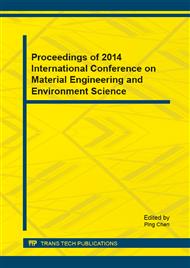p.90
p.97
p.103
p.109
p.115
p.121
p.127
p.133
p.139
Characteristics of Landscape (Land Use) Change and its Driving Force in County - A Case Study of Shunyi District of Beijing
Abstract:
Based on land use data and social economy data in 1999 and 2005, this article analyzed the spatial-temporal characteristics and driving factors of the land use change in Shunyi district by GIS technology and logistic regression analysis method. The result showed that transformation among different land use was dramatically changed from 1999 to 2005, such as the increase of construction land and the decrease of cultivated land and water area. Land transfer was mainly cultivated land to construction land, forest land, garden land, other land use; forest land to grass land and water area to cultivated land. The area of land changed from cultivated land to construction land was 14250.2hm2, and the ratio of the change is 20.09%; the changed land area from forest land to grass land was 887.6hm2 with 17.85% of changed ratio; the transformation area from water area to agricultural land was 1099.7hm2 and 23.75% of transformation ratio. The development of secondary and tertiary industry is the major driving factor of land use change from cultivated land to construction land, while the major reason for the changes from forest land to grass land and from water area to cultivated land was that the Caobai river has been dried up.
Info:
Periodical:
Pages:
115-120
Citation:
Online since:
November 2014
Authors:
Keywords:
Price:
Сopyright:
© 2014 Trans Tech Publications Ltd. All Rights Reserved
Share:
Citation:


